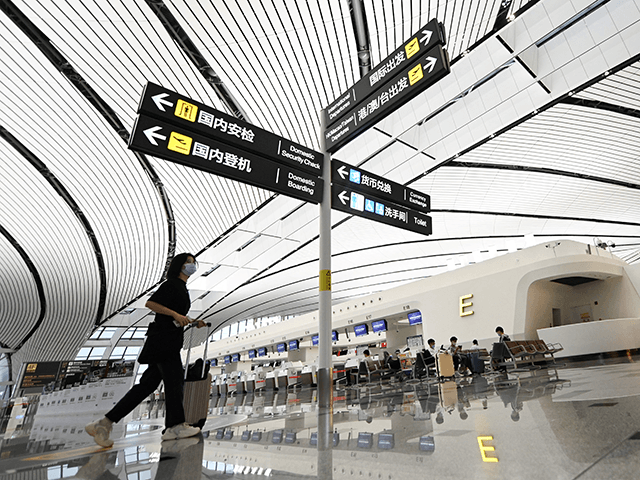China’s latest coronavirus outbreak exposes “glaring loopholes” in the national government’s epidemic control measures, China’s state-run Global Times admitted Sunday.
“It is absolutely worrying if a single flaw can affect many provinces and regions across the country, disrupt national holiday seasons such as Spring Festival or summer vacation, and impact the lives of many people and many service industries,” the newspaper argued. “It shows that our systematic progress in fighting the epidemic needs to be strengthened.”
The Global Times referred to China’s most recent epidemic of the Chinese coronavirus, which has reportedly spread from a single airport in eastern China’s Nanjing city to “at least 18 provinces and dozens of cities, resulting in at least four high-risk areas and 91 medium-risk areas as of press time on Sunday,” the newspaper reported in a separate article on August 1.
Chinese health officials first detected Nanjing’s coronavirus outbreak on July 20 after nine staff members of the Nanjing Lukou International Airport tested positive for the disease.
“[T]he failings in epidemic controls at airports and other facilities for coping with international arrivals must be addressed urgently,” the Global Times argued Sunday, citing the opinion of unnamed “Chinese epidemiologists and public health officials.” The same epidemiologists warned that if the Chinese government fails to “effectively impose” stringent measures to contain the Nanjing-related cluster infections, “China could face another full-scale outbreak.”
China suffered its first and most severe outbreak of the Chinese coronavirus from about December 2019 to April 2020 in Wuhan, the capital of central Hubei province. Wuhan’s outbreak was the first documented Chinese coronavirus epidemic on earth. The virus spread from Wuhan to the rest of the world, in large part due to the Chinese Communist Party’s failure to contain the outbreak during its initial phases. The failure was linked to a denial of the then-novel coronavirus’s contagiousness by both CCP officials and the World Health Organization (W.H.O.) through January 20, 2020, despite evidence to the contrary recorded by Taiwan and presented to the W.H.O. as early as December 2019. Wuhan’s epidemic subsequently sparked the ongoing Chinese coronavirus pandemic.
The Global Times, a mouthpiece for the Chinese Communist Party, blamed China’s latest coronavirus outbreak on imported cases of the “Delta variant,” or a strain of the Chinse coronavirus first detected in India, on August 1.
“Henan Center for Disease Control and Prevention [CDC] analyzed the virus strains of the newly reported local cases and the recently imported cases, and found that the outbreak was mainly caused by the Delta variant,” Zhao Dongyang, the deputy director of Henan CDC, told reporters at a press briefing on Sunday.
Henan province’s outbreak is based on a cluster infection in its capital city, Zhengzhou. Both Zhengzhou and Henan are still recovering from record flooding that devasted the province from July 17-July 20.
“The city [Zhengzhou] has been challenged by severe rainfall and floods recently, leading to 51 deaths as of July 23 and at least 99 deaths as of Thursday across Henan Province,” the Global Times noted on August 1.
Zhengzhou experienced a “once in a thousand-year” flood last month, recording its highest daily rainfall on July 20 since weather records for the city began. The metropolis received “the equivalent of eight months of rain in a single day,” according to the U.N. The estimates suggest the mega-city, home to at least 12.5 million people, likely suffered from a higher death toll than officially reported by Chinese Communist Party officials.

COMMENTS
Please let us know if you're having issues with commenting.